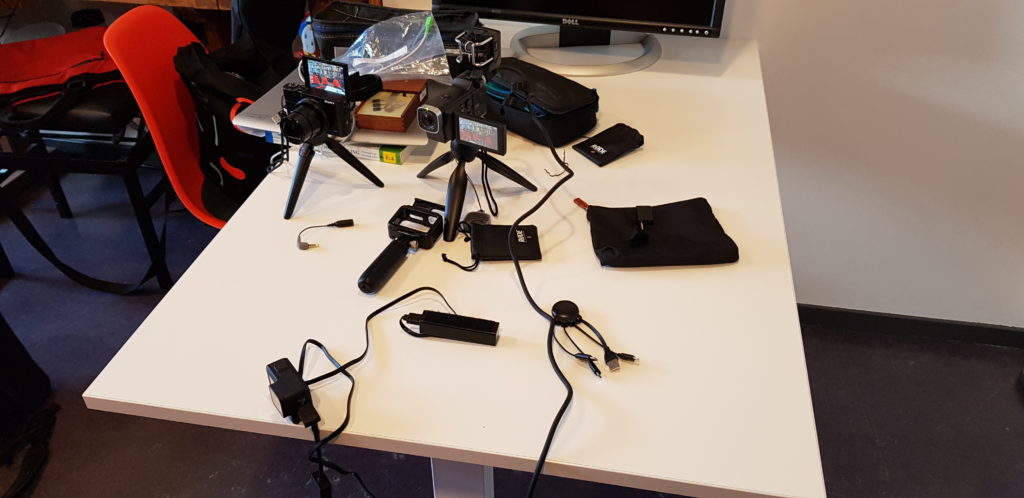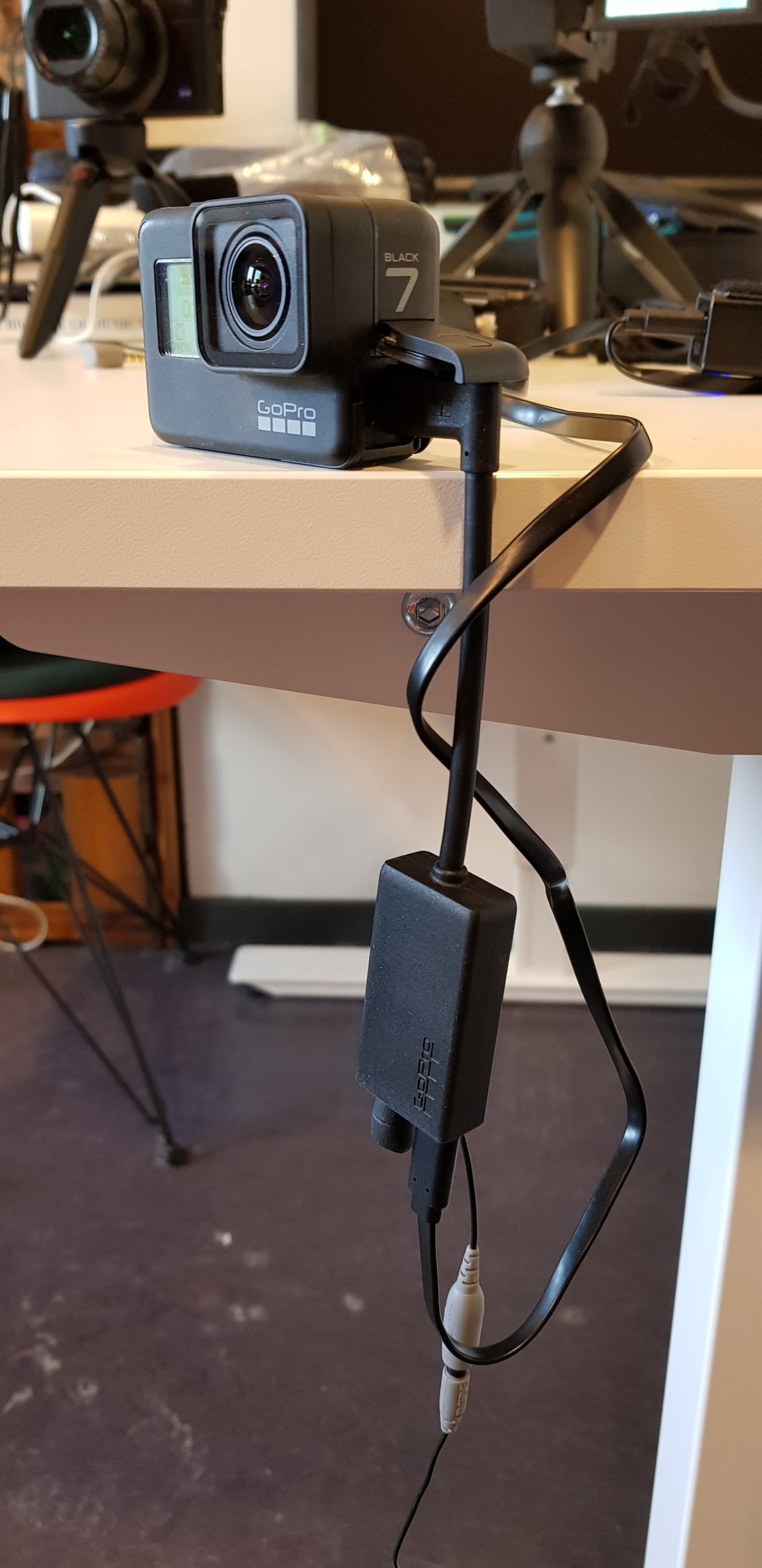We just started a new run of our free online course Music Moves. Here we have a tradition of recording wrap-up videos every Friday, in which some of the course educators answer questions from the learners. We have recorded these in many different ways, from using high-end cameras and microphones to just using a handheld phone. We have found that using multiple cameras and microphones is too time-consuming, both in setup and editing. Using only a mobile phone is extremely easy to set up, but we have had challenges with the speech’s audibility. Before recording this semester’s wrapup videos, I, therefore, decided to test out some solutions based on the equipment I had lying around:
- Sony RX100 V
- GoPro Hero 7 w/o audio connector
- Zoom Q8
- Samsung Galaxy Note 8
- Røde Smartlav+ lavalier microphone
- DPA Core 4060 lavalier microphone
In the following I will show some of the results of the testing.

Sony RX 100 V
First out was the Sony RX 100 V, which is my preferred stills camera. It is small, yet has a large image chip. This makes it able to capture much nicer photos than my phone. The biggest problem with the Sony camera is that it does not have a separate microphone input. So I had to rely on the sound from the built-in microphones. As can be imagined, the image quality is good, although the focus is slightly off in this recording. The audio is ok, but the built-in microphone picks up a lot of ambient sounds. It works, but it is clearly not a good solution for this type of setup.
GoPro Hero 7
Then I moved on to the GoPro Hero 7 with just the built-in microphone. This worked much better than expected. The audio is quite clear, and it is easy to hear what I am saying. The colours of the video are vivid, but the image is compressed quite a bit. The video is very wide-angled, which is super-practical for such an interview setting, although it looks slightly skewed on the edges. But overall this was a positive surprise.

Connecting a Røde Smartlav+ to the GoPro results in an immaculate sound. In fact, this could have been a very nice setup, had it not been for some challenges with placing the camera. That is because the audio dongle for the GoPro is (1) bent downwards and (2) this makes it impossible to use the housing needed to put it on a tripod (as can be seen in the picture to the right). This makes it super-clumsy to use this setup in a real-life situation. I hear rumours about a new audio add-on for new GoPro cameras, which may be very interesting to check out.
Zoom Q8
My next device is Zoom Q8. This is actually a sound recorder with a built-in camera, so one would expect audio to be the main priority. This is also the case. The video is quite noisy, but the sound quality is much better than with the GoPro. Still, I find that the microphone picks up quite a bit of the room. This is good for music recordings, but not so good when the focus is on speech quality.
Hooking up a DPA 4060 lavalier microphone to the Zoom Q8 definitely helps. This is a high-quality microphone, and it needs phantom power (which the Zoom Q8 can deliver). As expected, this gives great sound, loud and clear. The downside is that it requires bringing an extra XLR cable together with the microphone and camera since the DPA cable is too short for such an interview setup. I like the wide-angle of the video, but the quality of the video is not very good.
Samsung Galaxy Note 8
Mobile phones are becoming increasingly powerful, and I also had to try the camera of my Samsung Galaxy Note 8. I have a small Manfrotto mobile phone stand, making it possible to place it on a tripod at a suitable distance. After recording, I realized how much less wide-angle the phone image is than the GoPro and Zoom cameras, leaving my head cut off in the shots. This doesn’t matter for the testing here, however. The first video is using the built-in microphone of the mobile phone. I am very positively surprised about how crisp and clear my voice is coming through here. In fact, it is quite similar to the GoPro. The video quality is also very good—clearly, the runner-up after the Sony camera.
And, finally, I connected the SmartLav+ lavalier microphone to the Samsung phone. Here the sound is, of course, very similar to the GoPro recordings.
Conclusion
It is not entirely straight forward to conclude from this testing, but here are some of my thoughts after this very rapid and not very systematic testing:
- Using on-body microphones (lavalier) greatly improves the audibility as compared to using built-in microphones.
- The DPA 4060 is great, but the Smartlav+ is more than good enough for interviews.
- The GoPro could have been a great device for such interviews, had it not been for the skewed image and the clumsiness of the audio adaptor.
- Unfortunately, even though the Zoom Q8 is the best audio device (as it should!), its video is too bad to be used for such recordings.
- All in all, I think that the easiest and best solution is the Samsung phone with Smartlav+.